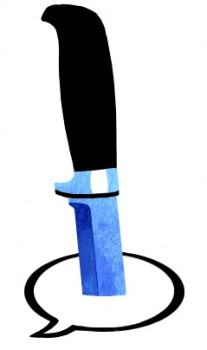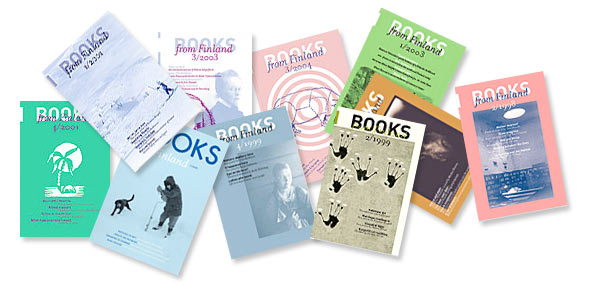Search results for "2010/02/2011/04/2009/10/writing-and-power"
Erkki Lampén: Neljä retkeä läpi Suomen [Four trips across Finland]
15 March 2010 | Mini reviews, Reviews
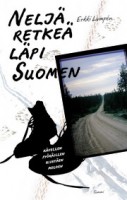 Neljä retkeä läpi Suomen. Kävellen – pyöräillen – hiihtäen – meloen
Neljä retkeä läpi Suomen. Kävellen – pyöräillen – hiihtäen – meloen
[Four trips across Finland. On foot – by bicycle – on skis – by kayak]
Helsinki: Tammi, 2009. 272 p., ill.
ISBN 978-951-31-4988-8
€ 25, hardback
In the spring of 2000, a downbeat 40-year-old man sat musing on the meaning of life when an idea suddenly came to him: why not walk from Helsinki to the Arctic Ocean? In his diary of this trek, which covered more than seven weeks and over a thousand kilometres, the journalist and writer Erkki Lampén describes the landscape, people, events and his own thoughts along the journey. Lampén made another three journeys (in 2003, 2004 and 2006) travelling by bicycle, on skis and by kayak, sleeping in a tent, in rustic cabins, in motels and hotels. His circular cycle journey aimed to follow Finland’s national borders as closely as possible; on skis he covered the distance from Porvoo on the south coast to Utsjoki in the far north; he then paddled his kayak from Lapland to the Gulf of Finland (this journey required plenty of wheeling the vessel from one river or lake to another). Lampén’s diary entries convey an entertaining blend of a realistic battle for survival, philosophising, joy, fury and humour.
Suomalaiset tutkimusmatkat [Finnish scientific expeditions]
23 December 2009 | Mini reviews, Reviews
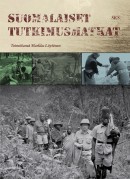 Suomalaiset tutkimusmatkat
Suomalaiset tutkimusmatkat
[Finnish scientific expeditions]
Toim. [Edited by] Markku Löytönen
Helsinki: Suomalaisen Kirjallisuuden Seura, 2009. 480 p., ill.
ISBN 978-951-746-774-2
€ 64, hardback
This book is a comprehensive survey of Finnish scientific expeditions from the 18th century up to the present day. It covers the sciences that traditionally involve field research: geology and palaeontology, botany and zoology, geography, oceanography, archaeology, linguistics, and anthropology. The book consists of 13 chapters written by experts in their respective fields. The best-known expeditions undertaken by Finns are A. E. Nordenskiöld’s voyage to the North-East Passage, J. G. Granö’s expedition to the Altai Mountains and Rafael Karsten’s travels with Amazonian headhunters. Other chapters tell of current fieldwork projects involving Finns, including research in the Amazon region and Antarctica, as well as the high Arctic. This book does not confine itself to Earth-bound scientific research; it even includes cosmology and space research – areas where scientific equipment developed by Finns have played important roles.
Tweet! Oink! Ow!
14 June 2012 | This 'n' that
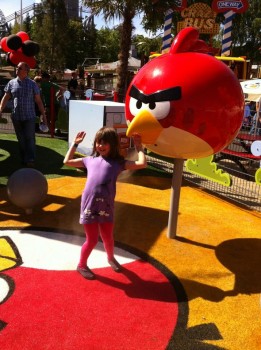
Fan fun: Angry Birds theme park, Tampere. Photo: Hildi Hawkins
For anyone who’s not a fan, it can be hard to see what has made the Finnish-born game Angry Birds the number one paid smartphone app in the world.
Catapulting wingless birds at pigs seems an unlikely route to hours of focused fun; but then, the same could seem true, prima facie, of moving a set of unrelated figures around a chequerboard according to some rather arbitrary rules. There are similarities, though – as 10-year-old Sophia said, ‘Angry Birds is a lot like chess – only more fun.’
So, when the most junior members of the Books from Finland editorial team – Max (3), Tia (6) and the above-mentioned Sophia (see their previous review here) – discovered that the world’s first officially sanctioned Angry Birds theme park was opening during their visit to Finland, it was obvious they had to be there for the occasion.
Friday 8 June was a fabulously sunny day for a trip to Tampere, Finland’s second city, and its famous Särkänniemi fun fair, on a spectacular location between two lakes. Angry Birds Land was packed with the nursery- and primary-aged children it’s intended for. More…
Eero ja Saimi Järnefeltin kirjeenvaihtoa ja päiväkirjamerkintöjä 1889–1914 [Eero and Saimi Järnefelt: Correspondence and diary entries, 1889–1914]
12 March 2010 | Mini reviews, Reviews
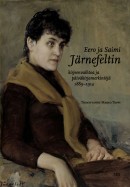 Eero ja Saimi Järnefeltin kirjeenvaihtoa ja päiväkirjamerkintöjä 1889–1914
Eero ja Saimi Järnefeltin kirjeenvaihtoa ja päiväkirjamerkintöjä 1889–1914
[Eero and Saimi Järnefelt: Correspondence and diary entries, 1889–1914]
Toim. [Ed. by] Marko Toppi
Helsinki: Suomalaisen Kirjallisuuden Seura, 2009. 403 p., ill.
ISBN 978-952-222-113-1
€ 38, hardback
The actress Saimi Swan (1867–1944) and painter Eero Järnefelt (1863–1937) were both born into prominent Finnish families united by similar creative and cultural ideals. The book consists mainly of correspondence between the couple, beginning with their engagement in 1890, and their diary entries up to 1914. Eero Järnefelt’s letters from Paris and Rome provide fascinating glimpses into personal relationships, discussions on artistic practices and aims, and political movements from the golden era of Finnish art. Saimi Järnefelt’s letters illuminate the conflict she experienced between her career and family life. She had to keep her engagement secret in order to safeguard her career; once married, Saimi Järnefelt left the theatre. In letters written to her sister-in-law Aino Sibelius – the wife of composer Jean Sibelius – Saimi Järnefelt often described the cycle of the seasons in her garden: gardening was a hobby the two women shared, in which their need for self-expression could find an outlet.
Suomalaiset pappilat [Finnish parsonages]
20 November 2009 | Mini reviews, Reviews
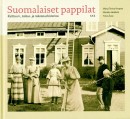 Marja-Terttu Knapas & Markku Heikkilä & Timo Qvist
Marja-Terttu Knapas & Markku Heikkilä & Timo Qvist
Suomalaiset pappilat. Kulttuuri-, talous- rakennushistoriaa
[Finnish parsonages. A cultural, economic and architectural history]
Picture research: Sirkku Dölle
Helsinki: the Finnish Literature Society, 2009. 231 p., ill.
ISBN 978-952-222-096-7
€48, hardback
From the Enlightenment period in the 18th century up until the 20th century, Lutheran parsonages played a significant role in Finland as centres of worldly life and propagators of culture and civilisation. Influential figures in many walks of life spent their childhoods in parsonages, and the parsonages themselves served as influences on the built environment of their surroundings. They began to be taken out of active use at an accelerating rate over the course of the 20th century. This book sets out to portray parsonages with interesting personal and social history and architecture. It also creates a narrative of the milieu and family networks of clergymen and their families – an institution that gradually began to break down in Finland after the Second World War. The portrayal of life in the parsonages is closely linked to the broader themes of agriculture, gardening and food. Illustrations from the collections of Finland’s National Board of Antiquities are supplemented by photographs from other museums as well as individuals.
What Finland read in February
19 March 2010 | In the news
We read comics. Numbers one, six and seven on the February list of Finnish best-selling books (of the Booksellers’ Association of Finland) were comics by Pertti Jarla.
Jarla’s series about the weird town of Fingerpori with its weird citizens seems to have hit the book-buying crowds. Milla Paloniemi’s foul-mouthed hedgehog appeared as number 4.
Number two in February was the victorious latest novel by Kari Hotakainen, Ihmisen osa (‘The human lot’, Siltala, 2009), soon to be published in no less than eight languages – including English, in 2012, by Christopher Maclehose Press (UK).
Number three was a first novel by Elina Tiilikka, Punainen mekko (‘The red dress’, Gummerus), the sad story of a young woman choosing to sell sex. Tiilikka has indicated that the novel is autobiographical, which will sell copies.
Last year’s Finlandia Prize-winning novel Uuni (‘The stove’) by the veteran author Antti Hyry was still at eighth place.
Jarkko Nieminen: Pelaamisen lumo [The fascination of the game]
20 August 2009 | Mini reviews, Reviews
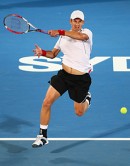 Pelaamisen lumo [The fascination of the game]
Pelaamisen lumo [The fascination of the game]
Helsinki: Avain, 2009. 175 p., ill.
978-952-5524-69-7
€ 38, hardback
Tennis is a curious game, as everyone who plays it knows – and even those who don’t, which is why it is such a popular sport. Although Jarkko Nieminen (born 1981), a professional player since 2000, has not yet won a Grand Slam event for Finland, in 2006 he was ranked no. 13. (Unfortunately, this spring Nieminen injured his wrist and missed the top matches of the season.) In this book (edited and published by his sister Anna-Riikka Carlson, who founded the publishing company Avain in 2003), Nieminen tells the story of his athletic career. ‘In Japan my visa said I was an “entertainer”,’ he recalls as he describes what it’s like to walk out on a court filled with thousands of spectators. Tennis is a gentleman’s game, a polite duel (or double), and Nieminen is certainly a gentleman par excellence. His personal story is designed to be strictly informative, as he chooses to keep his family life private, for example (his wife Anu, née Weckström, a Finnish multiple badminton champion, is referred to once). There is no doubt, though, that the reader will be convinced of Nieminen’s happy choice of an athletic profession.
Jorma Luhta: Tähtiyöt [Starry nights]
20 November 2009 | Mini reviews, Reviews
 Tähtiyöt
Tähtiyöt
[Starry nights]
Helsinki: Maahenki, 2009. 84 p., ill.
ISBN 978-952-5652-75-8
€ 41, hardback
Jorma Luhta (born 1951) is an award-winning Finnish nature photographer and author. The subject material of this book is night-time in the forests of northern Finland, illuminated by the stars and the Northern Lights. The problem of light pollution means that even in sparsely populated Lapland the lights from population centres can hamper the view over a radius of two hundred kilometres. Jorma Luhta’s photographs are the result of many years of dogged effort. The most impressive images of all were taken on the coldest night in a century: temperatures fell to around –50 °C. It takes split-second precision to achieve the greatest shots, such as when Luhta’s camera records a sheet of Aurora Borealis resembling Picasso’s white dove of peace (above). In his lyrical text Luhta, a night-time walker in the woods, observes his natural surroundings and contemplates such matters as his fear of the dark and feelings of isolation.
Glenda Goss Dawn: Vieläkö lähetämme hänelle sikareja? [Do we still send him cigars?]
30 December 2009 | Mini reviews, Reviews
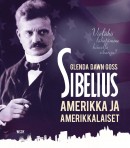 Vieläkö lähetämme hänelle sikareja? Sibelius, Amerikka ja amerikkalaiset. 24 tarinaa
Vieläkö lähetämme hänelle sikareja? Sibelius, Amerikka ja amerikkalaiset. 24 tarinaa
[Do we still send him cigars? Sibelius, America and Americans: 24 stories]
Translated into Finnish (from the manuscript) by Martti Haapakoski
Helsinki: WSOY, 2009. 268 p., ill.
ISBN 978-951-0-35517-6
€ 35, paperback
Finnish composer Jean Sibelius (1865–1957) was very highly regarded in the United States; the world’s first Sibelius appreciation society was set up in a small town in Pennsylvania, and at one time there was even a sort of Sibelius cult in Boston. In 1935 American radio listeners voted Sibelius their favourite living composer of symphonies. Walt Disney was an admirer of Sibelius’ music, though his plan to transfer The Swan of Tuonela to the big screen was never realised. Sibelius’ affinity for fine cigars was widely known, and sending boxes of cigars to the composer became a typical expression of admiration among Americans. Cigars were sent by regular citizens as well as prominent figures like Louis Armstrong. This book consists of 24 accounts describing interactions between Sibelius and Americans. It also details rises and falls in Sibelius’ popularity.Glenda Dawn Goss, is an American expert on Sibelius and possesses a doctorate in musicology. She has lectured at the Sibelius Academy in Helsinki since 2007.
Leena Krohn: Valeikkuna [False window]
12 June 2009 | Mini reviews, Reviews
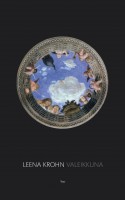 Valeikkuna
Valeikkuna
[False window]
Helsinki: Teos, 2009. 155 p.
ISBN 978-951-851-183-3
€ 21, hardback
The themes of the fiction of Leena Krohn (born 1947) have always included the distinction between life and art, the influence of the media and technology, and the dialogue between truth, illusion and falsehood. In Valeikkuna, her 28th book, the protagonist is a former student of philosophy who has installed a flotation tank in his home, where he spends most of his time, receiving customers to whom he gives advice. The philosopher ‘s teenage daughter lives in the mostly virtual but safe ‘Fake Fake Land’; their home town is ruled by the Dividers League, who use violence to establish their control. The impossibility of defining reality runs as a prominent theme throughout the novel. As is often the case in her novels, Krohn concentrates on the philosophical attitudes of her characters rather than on psychological depth; Valeikkuna is a wise and critical novel, although not perhaps among her best work. Krohn’s books have been translated into 15 languages; her novel Pereat Mundus (1998) is to be issued in English later this year by the San Francisco publisher Omnidawn.
We Finns
15 January 2010 | Columns, Tales of a journalist
Is it so bad to criticise a Finn, if you’re a Finn? Columnist Jyrki Lehtola takes another look at what you think about us Finns out there
Recently, the word ’Finland’ has been repeated in Finland, and generalisations made about what we Finns are like.
Last year saw the seventieth anniversary of the Winter War, and we congratulated ourselves on what a fine fighting nation we are.
A government branding work group tells us at regular intervals how creative a nation we are.
From time to time someone remembers to mention the sauna, while someone else is a little more critical and says we are also an envious nation. More…
Slowly does it
5 November 2009 | Reviews
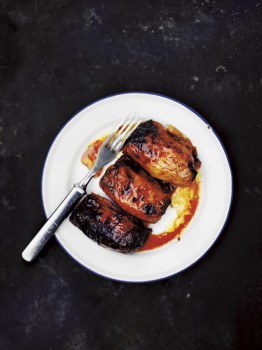
Straight from the oven: cabbage rolls. – Photo: Sami Repo
Mummola
[Grandma’s house]
(food: Hans Välimäki, photographs: Sami Repo, text: Mikko Takala, graphic design: Timo Numminen)
Helsinki: Otava, 2009. 224 p., ill.
ISBN 978-951-1-23930-7
€ 40
How paradoxical: in the past couple of decades, numerous internationally famous gourmet restaurants have sprung up in Finland, and at the same time it’s harder than ever to find ordinary, well-prepared ingredients for cooking at home.
It’s hard to get used to the fact that foods like beef and lamb kidneys, sweetbread, and cheaper cuts for use in stews and soups have made way for cheap Brazilian steaks on special offer, even at the largest stores’ meat counters. There’s no point in looking for whole chickens (and certainly not organic poultry), let alone whole, locally caught fish. The last time I asked at the fish counter of my local market if they might have any salmon heads and bones for chowder, the seller looked for a moment like she might summon security. The consumer wasn’t consulted when ‘taste’ and ‘variety’ were replaced by ‘ease’ and ‘speed’. More…
Armas Järnefelt. Kahden maan mestari [Armas Järnefelt. Maestro of two countries]
2 October 2009 | Mini reviews, Reviews
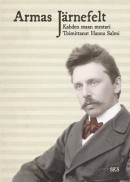 Armas Järnefelt. Kahden maan mestari
Armas Järnefelt. Kahden maan mestari
[Armas Järnefelt. Maestro of two countries]
Toim. [Ed. by] Hannu Salmi
Helsinki: Suomalaisen Kirjallisuuden Seura, 2009. 438 p., ill.
ISBN 978-952-222-057-8
€ 35, hardback
The conductor and composer Armas Järnefelt (1868–1959) was a member of one of Finland’s most prominent cultural families. His sister Aino was married to the composer Jean Sibelius. From 1905 he was the conductor of the Royal Opera in Stockholm and became a Swedish citizen. In the 1930s Järnefelt served as the artistic director and conductor of the Finnish Opera, forerunner of today’s Finnish National Opera. This book covers the various stages of his life and surveys the background to his compositions, with input from a number of Finnish music experts. Järnefelt, as a composer of beautiful melodies, was a part of the National Romantic tradition; his best-known piece, Berceuse (1904), is familiar to listeners around the world in many adaptations. Influences from Richard Wagner and Jean Sibelius are often seen in Järnefelt’s works. This book provides a more complete artistic portrait of Järnefelt than the rather superficial coverage previously available. Prior to the publication of this book, the committee responsible for the editorial work was incorporated as a society dedicated to Armas Järnefelt and has released musical scores, recordings and performances of Järnefelt’s works.
And the winner is…
27 November 2009 | In the news
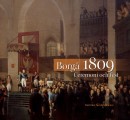 The winner of the Finlandia Prize for Non-Fiction 2009, worth €30,000, is Borgå 1809. Ceremoni och fest (‘Borgå [Porvoo] 1809. Ceremony and feast’) by historian Henrika Tandefelt (born 1972; see this review).
The winner of the Finlandia Prize for Non-Fiction 2009, worth €30,000, is Borgå 1809. Ceremoni och fest (‘Borgå [Porvoo] 1809. Ceremony and feast’) by historian Henrika Tandefelt (born 1972; see this review).
The final choice was made by Björn Wahlroos, Chairman of the Board of the Sampo Insurance Group. No doubt the historical period described in Tandefelt’s book is of great interest to Wahlroos, as he is the owner of the Åminne (in Finnish, Joensuu) estate, which is located in the south-west of Finland and dates from the 18th century. Wahlroos has recently restored the manor house to its full 19th-century glory. The Åminne estate was once the home of Gustaf Mauritz Armfelt, a Finnish-born statesman and officer. Armfelt was also King Gustav III’s trusted adviser – and later adjutant-general under Tsar Alexander I in St Petersburg, and finally, before his death, governor-general of Finland (1813). More…
Archive news!
11 May 2012 | This 'n' that
We’re delighted to be able to announce that the selection of the material published on the web pages of Books from Finland in the last phase of its existence as a printed journal, 1998–2008, is now available on this website.
The monthly archive selection has been extended back to 1998, and more than two dozen new contributor details have been added. Plus, any term you enter in the search box at the top right of the webpage will now look through everything we have online – not just what has been published since we went digital in 2009. So if you vaguely remember a piece about xx, or just want to play games by seeing how often we’ve featured yy, just enter your term in the search box and away you go.
This is just the first step in our bigger project of digitising a broad selection of pieces from Books from Finland‘s history, from 1976 (when it began to appear as a quarterly journal) onwards. The Books from Finland archive – 132 printed issues were published from 1976 to 2008, featuring hundreds of authors – represents an unparalleled treasure trove of Finnish literature and literary debate in English, and we can’t wait to get as much as we can online.
It is a long, slow process, so don’t hold your breath… But as we add new pieces we’ll be flagging them up and drawing them to your attention, from classics to some real period pieces, sometimes with new introductions by contemporary writers.
Watch this space – please remember, good things are worth waiting for!


